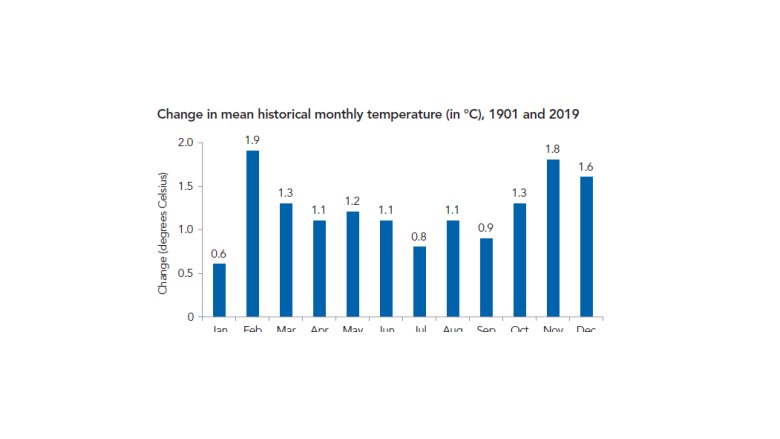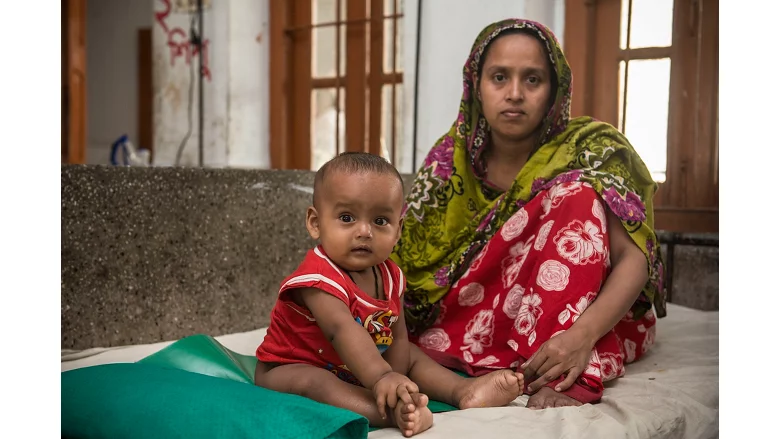STORY HIGHLIGHTS
- Bangladesh is experiencing erratic weather patterns along with a sustained rise in temperature and precipitation.
- Evolving climatic conditions have had detrimental effects on physical and mental health, leading to an increase in prevalence and variation of infectious diseases and mental health issues such as depression and anxiety disorders
- Strengthening healthcare and response systems is essential in mitigating the impacts of climate change on physical and mental health.
Being a low-lying river delta with a long coastline and floodplains that occupy 80 percent of the country, Bangladesh’s extreme vulnerability to the adverse effects of climate change is well documented. But, climate change in Bangladesh is not just about cyclones and floods. Changing and erratic weather pattern have also affected our physical and mental health. The climate change in Bangladesh have started to impact health with an increase in respiratory diseases, mosquito-borne diseases like dengue, along with deteriorating mental health conditions.
Difficult to Keep Cool
Bangladesh has experienced an average rise in temperature of 0.5°C between 1976 and 2019. The increase in maximum temperatures during this period has been shown to be consistent on a month-to-month basis, with the months from February to November getting warmer. The rise in maximum temperature across the country has not been uniform. For instance, between 1976 and 2019, compared to a 0.5°C rise in central parts covering Dhaka and neighboring districts, maximum temperatures rose by 0.9°C in the eastern parts (Chattogram and Sylhet divisions). In general, summers are becoming longer, and winters are getting warmer and monsoon becoming unpredictable beyond the norm.
The threats of climate change in Bangladesh have already extended to health in the form of higher incidences of respiratory diseases, vector borne diseases like dengue, along with deteriorating mental health conditions.

Monsoons are Longer and Rainfall is Erratic
Being situated on the edge of the tropical region, Bangladesh experiences some of the wettest monsoons in the world. During peak monsoon, from June to August, the average monthly mean rainfall has declined by 60 millimeters. On the other hand, mean monthly rainfall for September and October has increased by 43 millimeters, which indicates that the monsoon period is gradually becoming longer, extending now from March to October. Rising temperature during the winter months coupled with erratic rainfall patterns have eroded the distinct seasonality in Bangladesh.

Impact on Physical Health
A survey of 15,000 people in 3600 households has shed more light on the influence of climate variability on physical and mental health.
- Respiratory illnesses are likely to increase with rising temperature and humidity. A 1°C increase in temperature rises the likelihood of contracting a respiratory infection by 5.7 percentage points, whereas a 1 percent increase in humidity rises the chances of catching a respiratory infection by 1.5 percentage points.
- Waterborne diseases like cholera are likely to decrease with rising humidity and temperature. A 1 percent increase in relative humidity reduces the probability on contracting waterborne illnesses by 1.6 percentage points, whereas a 1°C increase in mean temperature reduces the likelihood of respiratory infections by 4.2 percentage points.
- Dengue is likely to increase for Dhaka as the climatic conditions become more suitable. Humidity in the range of 60 to 80 percent, maximum temperature between 25°C and 35°C, and rainfall between 200-800 mm create ideal conditions for mosquitoes. Weather data between 1976 and 2019 indicate Dhaka is experiencing falling humidity levels, rising temperatures, and heavier summer rainfall. These together with factors like urbanization are increasing the risk of the spread of dengue in Dhaka city.
Impact on Mental Health
- Changes in weather can cause mood swings. But, seasonality have a slightly different impact on anxiety than depression.
- The level of anxiety disorders increases with temperature and humidity. Increase in mean humidity and mean temperature increases the probability of having anxiety by 0.3 percent and 0.8 percent, respectively.
- More people suffer from depression during winter. Increase in temperature lowers the probability of depression by 1.6 percent.
- Further, women are at higher risk than men for depression, while men are more susceptible to anxiety.
0:00 / 2:48
What can Bangladesh do to tackle these Challenges?
By 2050, Bangladesh is expected to experience an increase in temperature of about 1.5°C. And between 2040 and 2059, annual rainfall is also expected to increase by 74 millimeters. These projected changes will escalate spread of infectious diseases and mental health issues. By taking urgent actions, Bangladesh can remain better prepared to mitigate the impacts of climate change on health.
The report suggests three ways for better adaptation:
- Improved data collection systems will help the country better track the evolution of climate-sensitive diseases and predict potential disease outbreaks.
- Strengthen health systems to preempt and mitigate outbreaks of infectious and other emerging or reemerging climate-sensitive diseases
- Strengthen response to mental health issues through awareness building, improving assessment mechanisms and facilitating means to address shortcomings such as self-help groups.

